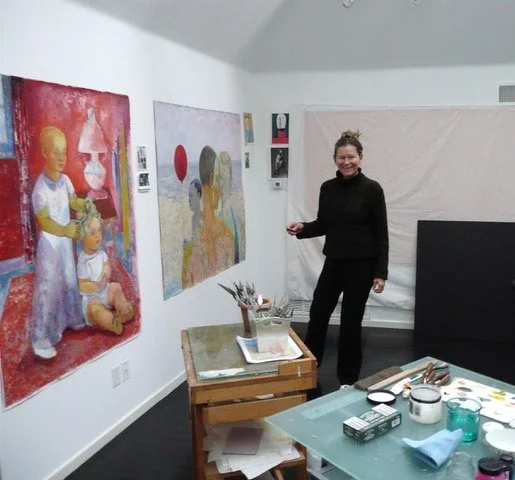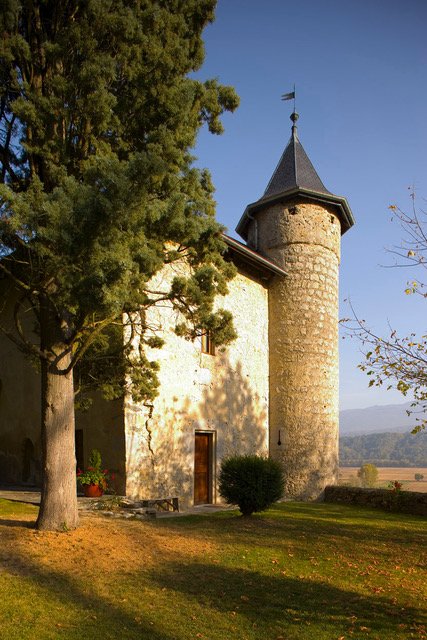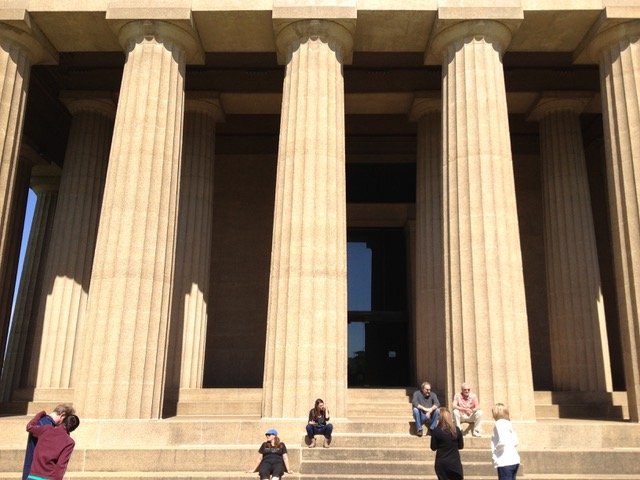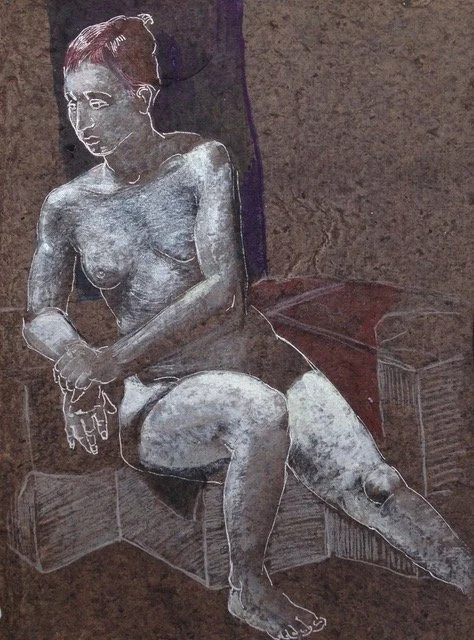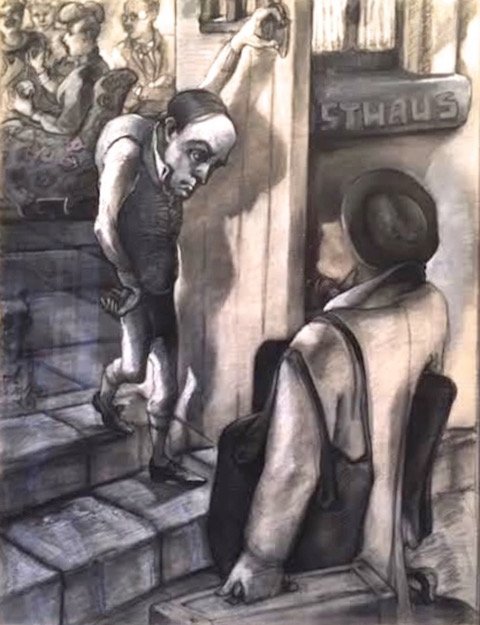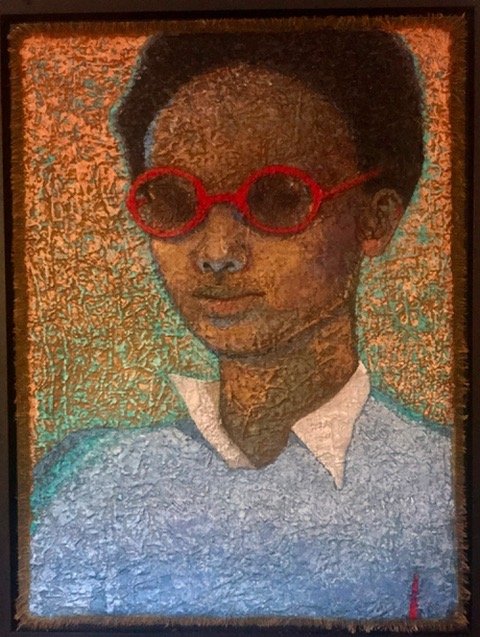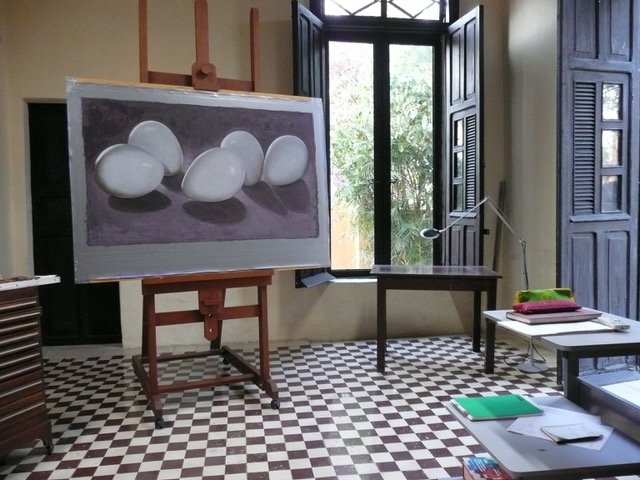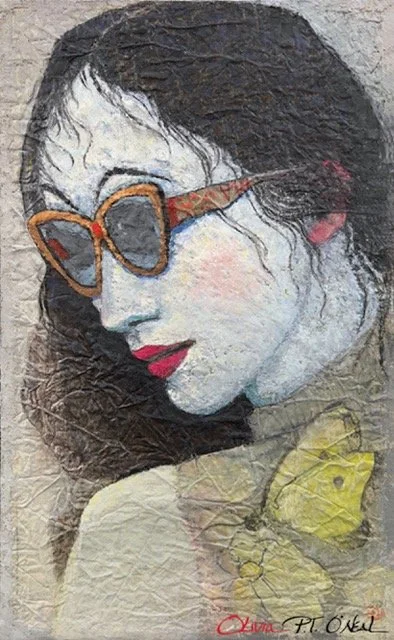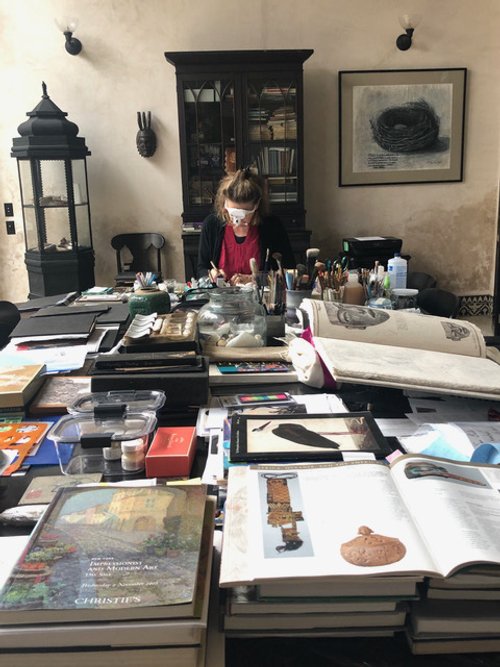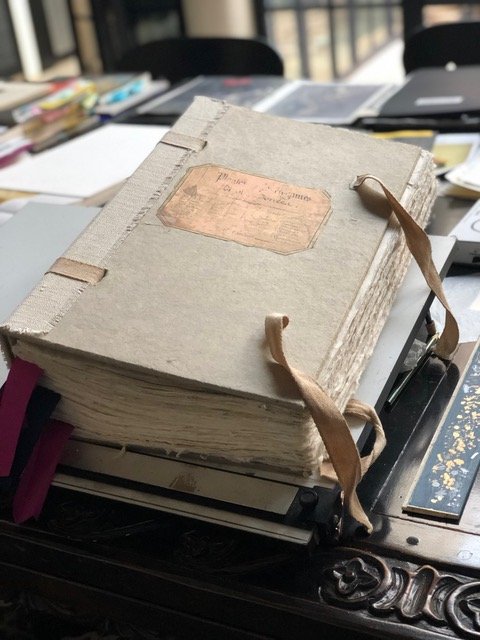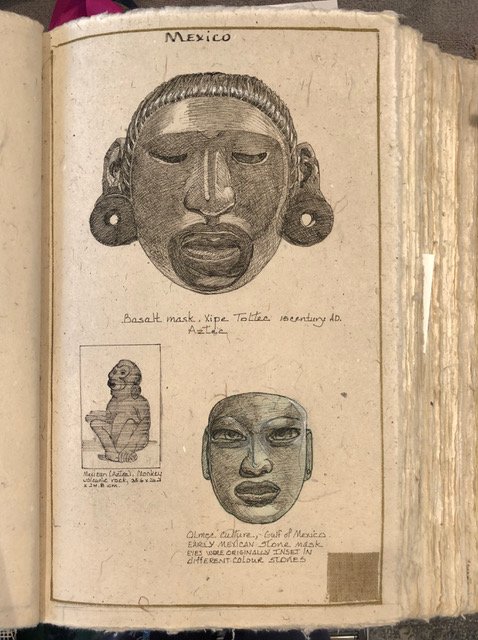Interview with Olivia-Patricia Terrell O'Neal
‘STYLE’ in my art is not my objective, each piece is an adventure in both process and substance, the technique is developed according to a need for expressing an inspiration, developing the means to create visually an inner feeling, or thought. I am inspired by a belief in the healing spirit of art.
Growing up in Nashville, how did your early environment influence interest in art and your eventual artistic style?
Live music was pervasive in clubs, restaurants, cafes, and diners. Whereas visual art was minimal in my world.
Born in Franklin Tn. my maternal grandparents were farmers, my family moved to Nashville early on, while visiting the farm frequently the experience with my grandparents was important. They made everything by hand from bread to churning butter. My grandmother made her own soap and created light by made candles. I marvelled at seeing many of candles strung up from the ceiling to dry- it was for my first exhibition.
Although, I was small they trusted me to collect eggs. I recall they seemed a bit dirty, warm, yet perfect, with the potential for life. It was a thrill.
They grew my favorite fruit- watermelons, BEAUTY personified, the colors red and green like giant colorful eggs. We ate homemade jam and biscuits. My grandmother daily kneading the dough, she let me feel which later became my connection to clay.
I studied sculpture in Italy and created works from clay with great joy.
Nashville:
My interest in the figure was inspired by the Greek figures at the Parthenon- a full replica which still stands in Centennial Park; my brother who became a sculptor, and I lived in walking distance. We were blown away by the enormity of the pillars that supported the structure and the monumental figures of the Greek gods, albeit cropped into large forms of bodies, broken heads, and faces with missing noses. All remained with us. They were grand and we were small, yet it was ART to us. We knew we wanted to be a part of their heaven.
How did your academic experiences at Washington University and later at the New York Academy of Art shape your approach to art, especially in relation to figurative drawing?
Most of my education at Washington University was liberal arts. Influenced by Dr. Smith an art historian- a traditionalist- during a time when the figure was frowned upon. He elevated the Greek and Renaissance period of human history in art as of great importance- the figure was supreme.
I acquired my undergraduate courses such as mathematics, symbolic logic, literature… and advanced art history, while also taking figure drawing… and such as was needed.
Also, while in St. Louis, I worked at an important abstract contemporary art gallery, non-figurative, Greenberg Gallery. With admiration for the great abstract artists and their work, I remained obsessed with figuration particularly drawing both from the imagination and from life.
Later this fascination and concentration on the figure encouraged me to acquire a Master’s Degree at the NYAA in New York. I chose that school for its total emphasis on the figure. At that time, we were expected to work from the live figure in all the courses such as anatomy, sculpture, painting, drawing, and composition.
At the time it was called The New York Figurative School of Art.
After graduating, I lived part-time for four more years in New York, attending a famous live model group on Spring St.- exclusively DRAWING the figure. “Minerva” was the director, two to three secessions a day - every day. Taking advantage of the opportunity to absorb life drawing for several months of the year- a love that continued. Spending the rest of the four years in France between Flavigny sur/Ozerain and at the chateau St. Philippe studio creating PAINTINGS.
You’ve mentioned being inspired by Käthe Kollwitz’s work. Can you elaborate on how her focus on social balance and humanity reflects in your own work?
Kollwitz lived from 1867 to the end of WWII, 1945, her drawings are intense and believable; her work shows her devotion to expressing human pain and empathy towards suffering during one of the darkest periods in modern history. She worked both from life and memory. She was able to relate to the suffering caused by humanity and the social imbalance she experienced during the wars in Germany.
Berlin, after WWII and before the ‘WALL’ came down was, ‘called,
a dead city’ because it was occupied by the Soviet Union- a communist government and was thought to ‘have no future’.
I was staying there for several months, living among the many remaining elderly West Berlin Germans. I felt like a voyeur, seeing them as survivors- the consequence of two wars. I made at least forty narrative drawings interpreting their suffering and what could have been hard feelings of bitterness worn on and through their weary bodies. Besides recording my interpretations, with small drawings, I spent a portion of my days working for an 81year old German man exiled for most of his adult life as he escaped death from the Nazis, as a ‘degenerate’.
Kurt hired me to help him with his memoirs which he wanted published in English. His life was a miracle of his existence. Through him and the people I encountered daily, I created at least forty drawings that were interpreted as the consequence of the wars. Kollwitz's work became real.
Kurt’s near-death survival rocked my naive American soul. He was considered a ‘queer’, judged to be dangerous to society, he fled to England at the beginning of the war. However, being German, he was imprisoned as an enemy, sent to Australia where he was placed in a prison until the war ended. He became an Australian citizen and was able to travel as an artist illustrator on the street wherever he found refuge. His life was the consequence of imposed misery. Born a “pretty boy” to a rich East German family. He was old and bitter. I saw a change as he was able to reminisce and relive his good fortune to be alive.
At that time, he was able to return to Germany to receive compensations for his injuries and received financial reparations for the rest of his short life. His good fortune was to have survived sorrows, - like a wounded sparrow coming back for seeds.
In your portraits, you often hide their eyes behind glasses, creating a sense of mystery. What led you to this artistic choice and how do you think it affects the viewer’s engagement with your work?
I have had a continuous interest in masks and their mystique from ancient multi-cultural forms, purposes, and meanings to the modern renditions like sunglasses.
Are we another person- transformed or unseen behind a screen? What is revealed behind the dark glasses. The series was a quest of interest.
The influence of HOLLYWOOD was permanent; at one time I lived in that area of Los Angeles a few blocks from Paramount Pictures, where the author Raymond Chandler inspired “film noir” and created a stereotype of Los Angeles, a city associated with movie-stars, and desire, mystery, glamour, and with shadows of fear.
The idea was affective while often he called “dark glasses “Shades”, I saw them in a broader light of excitement, creativity, fashion, and mystique. “Shades” can be seen per advertisements as a classy means of being SEEN or NOT, perhaps hiding or wearing an instant MASK.
I was seriously curious to know what one can comprehend without seeing the eyes. Sunglasses which seem to me a modern depiction of the MASKS prompted a large collection of images to study their purpose through advertising, snapshots of celebrities encased in dark glasses. It offers mystery, style, modern options, and more questions.
Having studios in different countries, how do the cultural differences between the USA, France, and Mexico influence your artistic process and themes?
The contrast between the different countries, I associate LA and New York as different counties. Los Angeles for me was associated with cars, films, and the HOLLYWOOD culture. New York reflects the world, that is where I received my ART education both in and out of school. The Metropolitan Museum of Art is where I did independent studies in their drawing room where one was allowed to request any drawing that was not on exhibition to be set in front of us (not to touch). I often copied Millet’s humble depiction of French peasants and Francisco de Goya’s emotional depictions Los Disasters de la Guerra and some of his Los Caprichos. Goya was to have a significant influence on my imagination.
France is where I was able to create the visual interpretation Mary Shelly’s Frankenstein, the Modern Prometheus: living in the countryside of France among the Alps. Having studied the genius of the young Mary Shelly, a gothic romantic author, I became obsessed by her monster’s desire to be LOVED and Victor Frankenstein’s AMBITION for immortality.
Looking out every day at the mountains I saw my direction among the stimulation of France. The studio at Chateau St. Philippe originally a monastery built in 1032 fueled my inspiration.
Part of every year for 6 years was spent visually imagining Victor Frankenstein and his unnamed Creature, whom for two hundred years since has assumed the name FRANKENSTEIN.
The paintings were shown in a solo exhibition in Santa Monica at Laurie Frank’s gallery.
She wrote:
‘I was struck dumb when I first saw Patricia Terrell-O’Neal’s ‘The Myth of Frankenstein’. For me, these paintings did what great art should do, shocked me into recognition of a dazzling painting so pure as to become exquisite. Painting nowadays is not supposed to be plainly narrative, but I experienced this body of work as a gorgeous abstraction, not as image but of emotion, a geometry not of text, but of subtext. They remind me of Goya. These paintings let me hear the lonely howl of these monsters, the creator and the created with his exploded soul, and to really see what is most buried and hidden not in them, but in me.’
In my opinion, this series could not have been inspired anywhere but Chateau St. Philippe, France.
Mexico, the Yucatán, was part of every year for many years and it is there I rested my soul and was inspired to create egg paintings. In my mind, they symbolize potential both material and spiritual. I’m drawn to their iconic shape, form and color combinations as light reflects on them. Eggs have been a theme of mine for many years as a universal symbol of birth and life- evolved to imply a mathematical order of time and space-a process of endless discovery.
Could you walk us through your process of creating a piece, from the initial concept to the final artwork?
Reflected Light
This is a personal technique developed over several years. The linen is twice washed which delivers an organic shape that reflects light, a handmade process that involves many layers of primer, marble dust, and pigment with wax. The method of painting is traditional in that it is first drawn to establish the imagery and composition taken from various sources, mostly ideas that come as an inspiration, then painted with a mixture of oil paint, a putty like paste, wax, and pigment. Portraits are sometimes from life, invented from combinations of persons known or unknown.
The process takes so long that the original idea is unpredictable and is often established as I go along. This technique has depth of vision, richness of color and texture; which it can be described as
INSPIRATION
EXPLORATION and REVELATION
In works like ‘In Gold Shades,’ The Boy with Red Shades’, and ’The Butterfly Shades,’ there’s a distinct use of color and emotion. What are the stories or ideas behind these pieces?
Two of the paintings, ‘Boy in Red Shades’ and ‘The Butterfly Shades are large and were damaged due to moving them from Santa Monica, and Ojai, California, to Merida, Yucatan, then to the Tahoe area where I am now. The linen was attached and hand prepared with a developed ground for cold wax painting mixed media oil painting.
The fabric detached from the panels, and I had to do drastic surgery on them, slicing, reglueing, and resurfacing. Finally, I layered the colors from the earlier ones to create completely new coloration. The paintings took on greater depth and meaning.
It was exciting, but nerve wrecking not knowing what they would look like. Ultimately, the original imagery remained somewhat as before but with more depth of visual feeling. The colors were richer and more varied. I liked them better.
The small one, ‘In Gold Shades’ was taken from a snap shot of Julian Assange as he was coming out of the court-room having been judge guilty of espionage and yet to be sentenced- many years later now still imprisoned. The “shades” did not hide his past nor his future.
Your work is known for establishing an emotional and visual connection with viewers. How do you approach this aspect of your art, and why is it important to you?
Fortunately, having lived in Europe, North America, and Mexico, I experienced tremendous feeling and emotions from seeing grand ART retrospectives, such as the German expressionists. Constantin Brancusi in Paris, Louise Bourgeois’ grand retrospective with her immense Spiders in Paris, Jay DeFeo’s ROSE, at the Whitney and San Francesco, Alice Martin’s retrospective in Los Angeles, Goya in Madrid, Alberto Giacometti’s retrospective in New York, Juan Miro in Spain, and the great colorist Pierre Bonnard in New York, Lucian Freud in London, and Leonard da Vinci’s retrospective at the Metropolitan Museum of art, which I visited not everyday but almost.
I was struck by the powerful feelings and emotions that was freely exhibited through all their works by making their art with integrity and passion. It seemed natural for me to admire and respond accordingly.
Feelings and emotion comes easily in my art, as that is how I respond to art. Even to Giorgio Morandi s’ paintings of bottles, vases, and bowls which for me they read like poetry.
As an artist who has been represented by international galleries with 27 group shows, how has your artistic vision and style evolved over the years? Could you share how your experiences with these exhibitions have influenced your creative process?
My experience with exhibitions is the same; they have been a means of experiencing the viewers reaction. My desire to create a sincere feeling of understanding- to affect an emotion, to communicate a meaningful connection- that is ONENESS.
My experience with exhibitions was highlighted by the solo show at Bergamot in Santa Monica, Ca. with the Frank Gallery and the
‘Myth of Frankenstein’. What Laurie Frank wrote was my validation and inspiration. (I quoted her earlier)
Looking forward, what themes or techniques are you excited to explore in your upcoming works?
Yes, I am excited about future ideas, particularly the next three months I shall be living in the Napa area of California in a rented studio to continue working on what I call my ‘LOOK AND SEE BOOK’ a linen paged volume where I draw from copies in art books, catalogues, magazines, to compare and contrast art and artifacts through history also with contemporary images to make connections with the past, present and future. It is not a literary book, rather a visual exploration with some written descriptions. There are over 100 pages, each page composed and hand drawn, mostly with pen, ink, gauge, and watercolors. I will have been working on this part-time since 2014.
Also, recently in oil painting I’ve been painting small interpretative portraits from life with a model which shall be continued upon returning to Incline Village, here in the Tahoe area by May.

